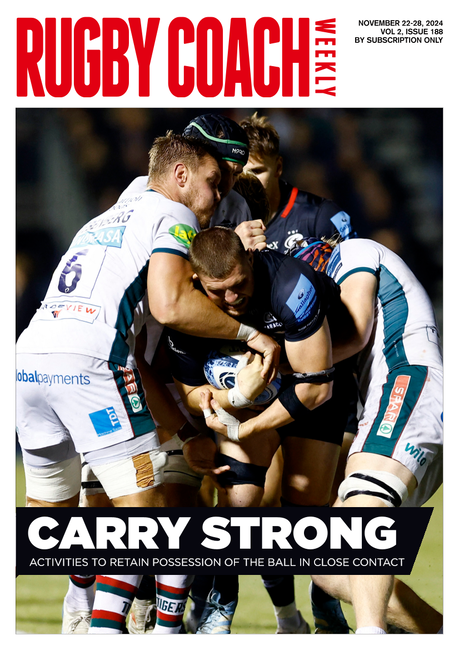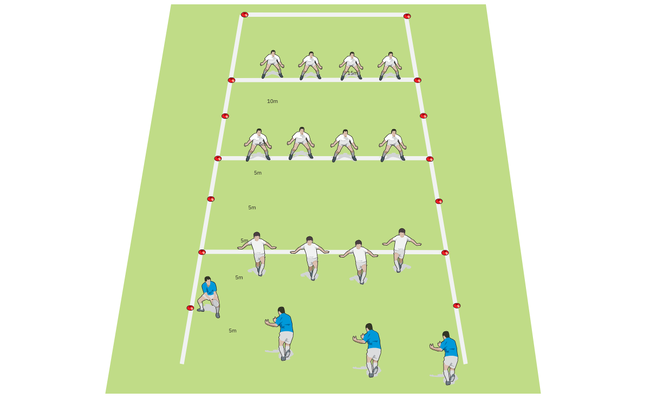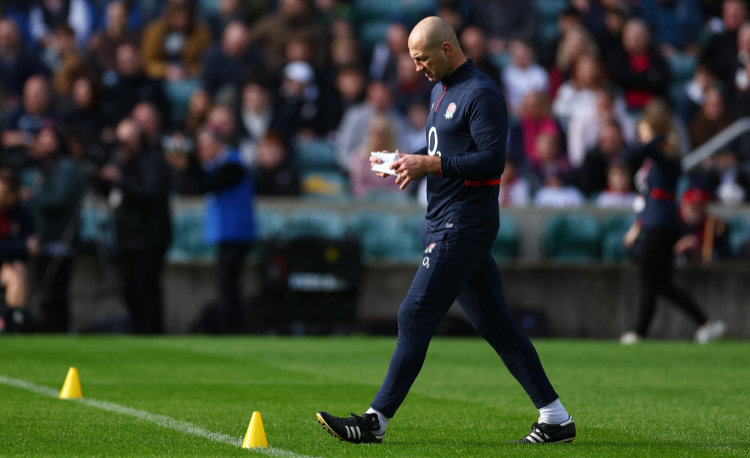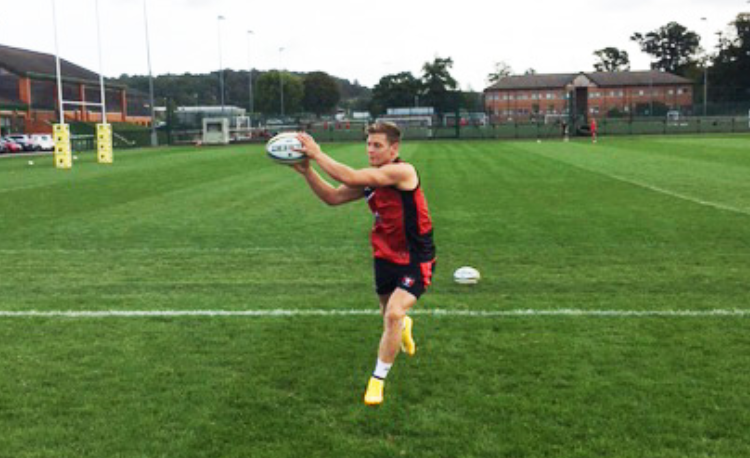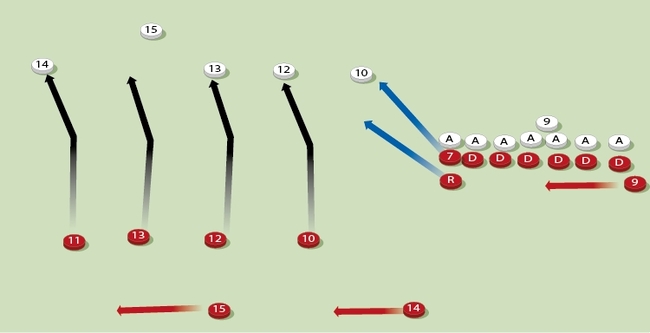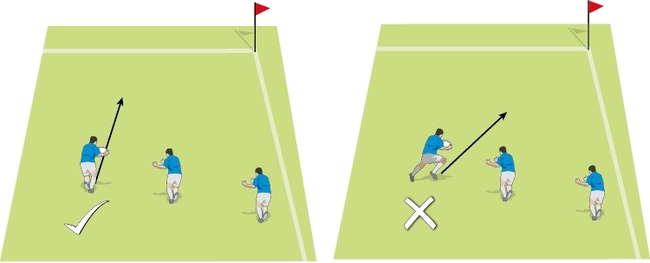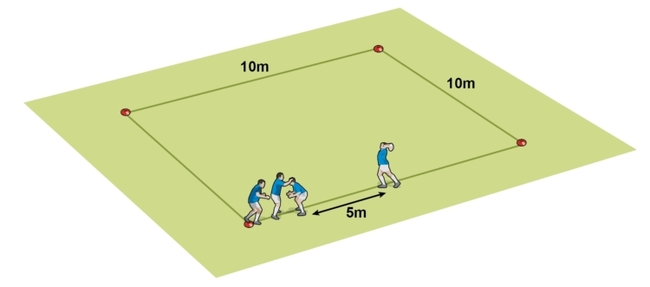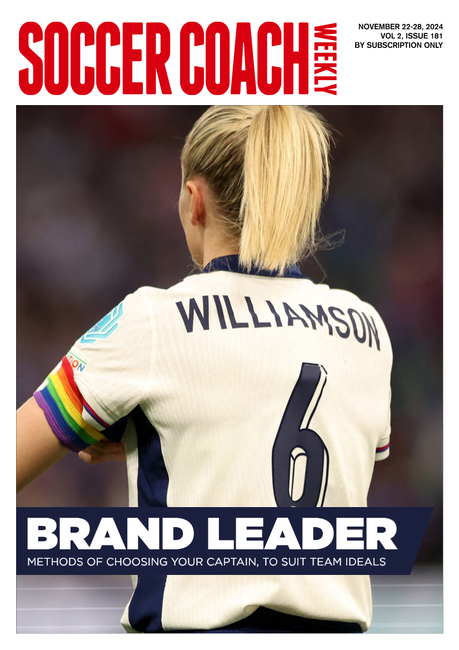Three ways to get them communicating (plus "monkey banana")
When the whistle goes to play, young players tend to shut up. So how can you make them talk more and work better as a team? Follow these golden rules and reinforce them with some monkey fun…

Many teachers and parents of young children may be surprised that those children could ever be quiet. But often a rugby pitch is a place of relative silence. At home and in class, children communicate incessantly – but on the playing field it’s a different story.
The keys to communication for young players are the same as for schoolchildren or siblings. Promote simple communication – and avoid being a monkey.
A simple look making eye contact might be all that’s needed to indicate that a pass is coming that way from the ball carrier, or that help is required. More directly, a nod means “yes” but more specifically can mean “pass”.
Players need to do more than just see – they must also look at what’s happening around them and react to it, whether it’s a nod or following someone’s pointed hand.
Communication is a two-way process. It requires a recipient to listen to what’s being said. Many may hear, but the instructions need interpretation and acting upon. Requests and instructions will mean nothing if they fall on deaf ears. This is not only listening to team mates – it includes listening to referees’ warnings or instructions, or to what the opposition is saying so you can react to that.
Talking is key to most communications in a match. Whether broadcasting tactical calls, calling for a pass or shouting a warning, the voice is a powerful tool.
Specifics are key, however, to really effective communication. “Yes” may mean a pass is wanted, but “pass left” is a better call because it provides easily interpreted information. “Tackle” is a universal instruction, but “knees” may be a stronger instruction.
If you have three teams, one team is off for two minutes or swaps on when another team transgresses

Many teachers and parents of young children may be surprised that those children could ever be quiet. But often a rugby pitch is a place of relative silence. At home and in class, children communicate incessantly – but on the playing field it’s a different story.
The keys to communication for young players are the same as for schoolchildren or siblings. Promote simple communication – and avoid being a monkey.
LOOK…
A simple look making eye contact might be all that’s needed to indicate that a pass is coming that way from the ball carrier, or that help is required. More directly, a nod means “yes” but more specifically can mean “pass”.
Players need to do more than just see – they must also look at what’s happening around them and react to it, whether it’s a nod or following someone’s pointed hand.
…LISTEN
Communication is a two-way process. It requires a recipient to listen to what’s being said. Many may hear, but the instructions need interpretation and acting upon. Requests and instructions will mean nothing if they fall on deaf ears. This is not only listening to team mates – it includes listening to referees’ warnings or instructions, or to what the opposition is saying so you can react to that.
…AND TALK
Talking is key to most communications in a match. Whether broadcasting tactical calls, calling for a pass or shouting a warning, the voice is a powerful tool.
Specifics are key, however, to really effective communication. “Yes” may mean a pass is wanted, but “pass left” is a better call because it provides easily interpreted information. “Tackle” is a universal instruction, but “knees” may be a stronger instruction.
Signal failure? Then play a game of monkey banana
Two equal teams of no more than five a side in 10m boxes.If you have three teams, one team is off for two minutes or swaps on when another team transgresses
First, play monkey silent…
- The team in possession must make five consecutive passes to score a point
- The ball carrier can’t run with the ball, and defenders can’t stand within one step of the carrier.
- The team in possession mustn’t speak.
- The defenders aim to block the passes. If necessary, help the ball-carrying team by only allowing defenders to block with their right hand.
- Turn over possession if the ball is dropped or knocked down or goes out the box.
- The ball can’t be passed straight back to the passer
…Then play monkey name
- Same rules except the ball can only be passed to a player who has been identified by the ball carrier by name
- Finally, the passer can only pass to a player who has called for the ball
- Initially allow them to say “yes” but after that they must use a different instruction
Newsletter Sign Up
Coaches Testimonials

Gerald Kearney, Downtown Las Vegas Soccer Club

Paul Butler, Florida, USA

Rick Shields, Springboro, USA

Tony Green, Pierrefonds Titans, Quebec, Canada
Subscribe Today
Be a more effective, more successful rugby coach
In a recent survey 89% of subscribers said Rugby Coach Weekly makes them more confident, 91% said Rugby Coach Weekly makes them a more effective coach and 93% said Rugby Coach Weekly makes them more inspired.
Get Weekly Inspiration
All the latest techniques and approaches
Rugby Coach Weekly offers proven and easy to use rugby drills, coaching sessions, practice plans, small-sided games, warm-ups, training tips and advice.
We've been at the cutting edge of rugby coaching since we launched in 2005, creating resources for the grassroots youth coach, following best practice from around the world and insights from the professional game.

